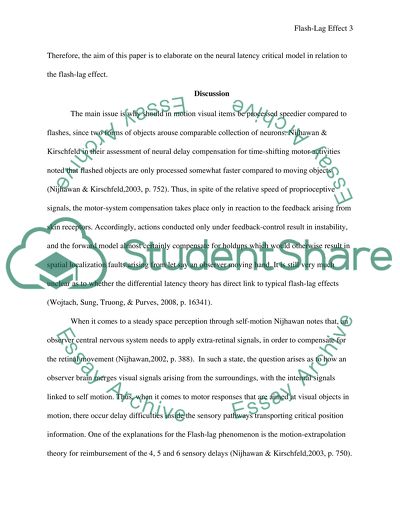Cite this document
(“Neural latency, critical approach in relation to flash-lag effect Essay”, n.d.)
Neural latency, critical approach in relation to flash-lag effect Essay. Retrieved from https://studentshare.org/psychology/1475315-neural-latency-critical-approach-in-relation-to
Neural latency, critical approach in relation to flash-lag effect Essay. Retrieved from https://studentshare.org/psychology/1475315-neural-latency-critical-approach-in-relation-to
(Neural Latency, Critical Approach in Relation to Flash-Lag Effect Essay)
Neural Latency, Critical Approach in Relation to Flash-Lag Effect Essay. https://studentshare.org/psychology/1475315-neural-latency-critical-approach-in-relation-to.
Neural Latency, Critical Approach in Relation to Flash-Lag Effect Essay. https://studentshare.org/psychology/1475315-neural-latency-critical-approach-in-relation-to.
“Neural Latency, Critical Approach in Relation to Flash-Lag Effect Essay”, n.d. https://studentshare.org/psychology/1475315-neural-latency-critical-approach-in-relation-to.


